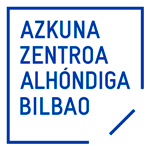
Pamplona, Iruñea 1978. Degree in Fine Arts from the University of the Basque Country, he has broadened his studies with training in seminars given by artists and curators such as Itziar Okariz, Esther Ferrer, Julie Mehretu, Miroslaw Balka or Peio Aguirre.
Over the past few years he has participated in artistic residencies in Italy, Iraqi Kurdistan, Cuba, Austria, Mexico and China.
He has had individual exhibitions in Madrid: Tabacalera Art Promotion (2017), Raquel Ponce Gallery (2013), RMS El space (2011); Bilbao: Carreras Múgica Gallery (2017), Gio Bat (2015), Sala Rekalde (2014); La Habana: Artista x Artista (2016); Mexico City: Ateneo Español de México (2012), AN Studio (2011), and Pamplona: Polvorín de la Ciudadela (2008). Among his latest group exhibitions worth highlighting is his participation in “Complexo Colosso” (Colossus Complex), in the CIAJG of Guimarães, Portugal.
He has received varied scholarships and awards for artistic creation, such as First Place in the 15th Contest for Young Artists in Pamplona (1999) and Second Place in the 24th Certamen Encuentros of Navarra (2007); he was selected in the Art Bienale in Amposta, Tarragona, Spain (2020) and the Premio Itzal Aktiboa (2018), among others.
Share:
Roma interrotta
In the year 1978, 12 of the most renowned international architects were invited to rethink Rome, based on the map drawn by Giambattista Nolli in 1748. It was becoming urgent to re-imagine a city that had been paralyzed for two centuries, victim of its eternal past. Aldo Rossi answered that call with a project that developed his distinct concept of the “analogic city”, a procedural methodology characterized by seeing the architecture and the city through history.
My proposal sets out an experiential rapprochement to modern day Italy using Rossi’s strategies of analogical thought, to develop a pictorial work based on the multiform image of a country constructed on the addition of dissonant and conflictive fragments of its past. Through this thought, according to Jung “it’s not discourse, but an introspection of the materials from the past, an act turned inward”, I will address a specific case of urban stratification with a political and historic nature: the graphic and monumental remains of the twenty fascist years that live with the rest of post war material, memorials of the resistance and places of remembrance.
E.F.
Carne en marcha. (Meat on the go)
The future is here -they said-, and in it we remain. Power after power, prospective after prospective. Because IT IS IMPORTANT TO OVERCOME, BUT MORE IMPORTANT TO FIGHT. (I wished that all lived there, on the outskirts of Forli, in the “Villa dei Ricordi”). In a small village in the north of Burgos, on the rocks, one may still read: Europe will be fascist, or fascitized.
YES, YES, YES, YES, YES, YES, YES
Indestructible Poetry. Massive corps thirsty for glory.
But there are other ways to live life: with memory, with horizon, with height.
A flat battle, and a machine to see the arrows along the way. We will get old, we will die, and some will have to remember us as we remember those who came before us.
No to paint, no to the recognizable.
ME NE FREGO
The thickness does not depend on the quantity of material, but the meaning. Conflicting truths accumulate on paper, something like euphoria. That is how everything began, PER NON DIMENTICARE, to form part of an immense elegy. “Un popolo di poeti di artisti di eroi di santi di pensatori di scienziati di navigatori di trasmigratori”. That is also written on stone.
CHI SI FERMA É PERDUTO.
No to the epic of the body, no to technique.
It wasn’t true, paint hadn’t died, nor had the ideologies, not any of them. Luckily, in art, there is room for all of the living, because history is always measured up in deaths. From so many, they appeared in the landscape, in the paintings. Fresh flowers, and a crown of fire at the Monte Sole.
LOTTA DIFFUSA
